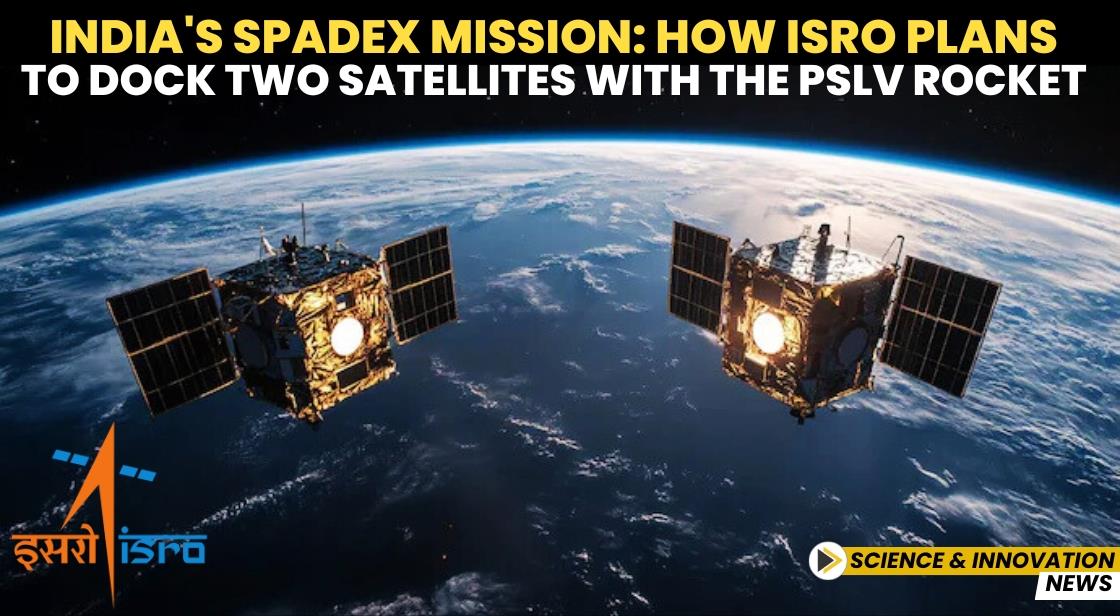India's SpaDeX Mission: How ISRO Plans to Dock Two Satellites with the PSLV Rocket

News Synopsis
India’s space agency, ISRO, is set to achieve a remarkable milestone with the upcoming SpaDeX mission, slated for December 30, 2024. This ambitious mission will showcase India’s ability to perform space docking, a sophisticated space technology that has only been successfully executed by a select few nations. The mission is expected to position India as a key player in the global space race, making significant strides in space exploration and satellite operations.
ISRO’s Entry into the Exclusive Space Docking Club
The SpaDeX mission marks India’s entry into an exclusive group of countries capable of performing space docking. Through this mission, ISRO will launch two satellites, which will be equipped with the 'Bhartiya Docking System'—a cutting-edge technology developed by ISRO to facilitate the docking process. This docking system will enable the two satellites, named 'Chaser' and 'Target', to merge into a single unit in space, a critical step in advancing the agency’s space capabilities.
Modified PSLV Rocket Design for Efficient Launches
The PSLV (Polar Satellite Launch Vehicle) rocket, a long-standing workhorse for ISRO, will be used for the SpaDeX mission. For this mission, the PSLV has undergone significant modifications to improve its performance. One of the major changes includes a round protective hood that covers the payload instead of the traditional payload fairing. These modifications will streamline the assembly process and help improve the overall efficiency of the launch from ISRO’s First Launch Pad (FLP).
With these enhancements, the PSLV rocket is now better equipped to meet increasing demands for future launches, aligning ISRO’s practices with international standards. This advanced version of the PSLV is crucial for the success of the SpaDeX mission and demonstrates ISRO’s ability to adapt and innovate in the face of evolving space requirements.
The Complex Science of Space Docking
One of the most challenging aspects of the SpaDeX mission is the space docking process itself. The two satellites, Chaser and Target, will be launched into orbit at speeds of 28,800 km/h, requiring precise manoeuvres to reduce their relative velocities to an incredibly low speed of just 0.036 km/h. This careful process is necessary for the satellites to dock and form a single unit in space, which is the core objective of the mission.
The Bhartiya Docking System, developed by ISRO, will be used to achieve this docking. The system is designed to meet the International Docking System Standard (IDSS) set by NASA, but with a key difference: the Bhartiya system has fewer motors than the IDSS, improving efficiency. This system, which is patented by ISRO, represents a significant technological achievement and further establishes India as a global leader in space innovation.
Importance of the SpaDeX Mission for India’s Future Space Plans
The success of the SpaDeX mission holds great significance for India’s future space endeavors. Space docking technology is crucial for several upcoming projects, including Chandrayaan-4, the planned Indian space station, and India’s ambitious Gaganyaan mission, which will involve sending Indian astronauts into space. Docking technology will play a pivotal role in ensuring the safety, efficiency, and long-term success of these missions.
By successfully demonstrating space docking, ISRO will place India among the leading space-faring nations, opening the doors for more complex and advanced space missions in the future. The SpaDeX mission will lay the foundation for future projects that will push the boundaries of space exploration and innovation.
Conclusion: A New Era for Indian Space Exploration
The SpaDeX mission is a significant step forward for India’s space program. It not only demonstrates ISRO’s ability to perform complex space docking but also solidifies India’s position as a global leader in space technology. The mission's success will pave the way for more advanced missions, including long-duration space exploration and manned missions. ISRO’s commitment to innovation and progress continues to push the boundaries of what is possible in space, ensuring that India plays a major role in the future of space exploration.
You May Like









